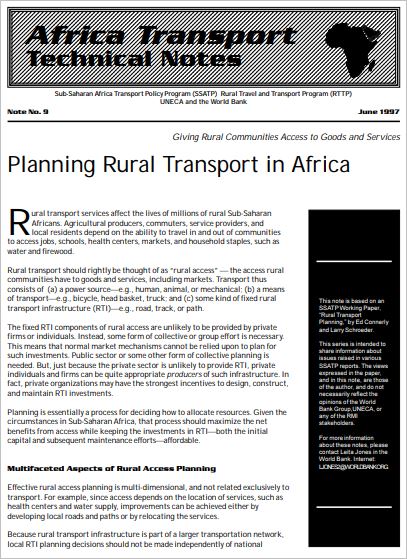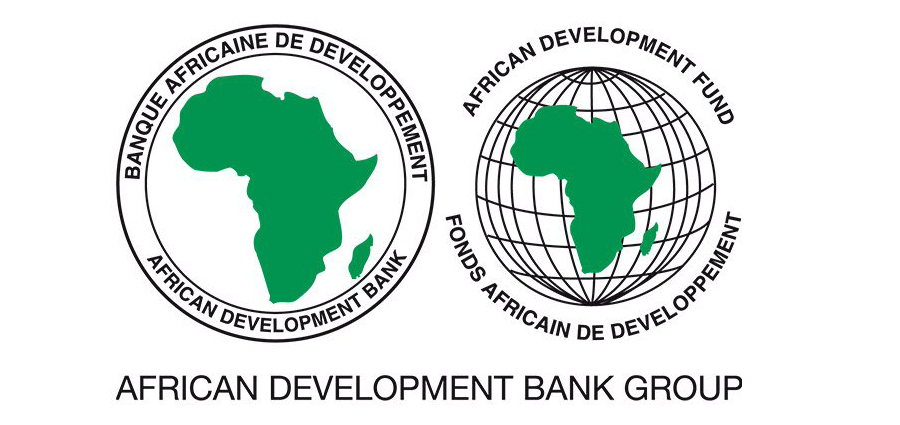Planning Rural Transport in Africa
Ed. Connerly et L. Schroeder

This note is based on an SSATP Working Paper entitled "Rural Transport Planning" written by Ed Connerly and Larry Schroeder, who argue that rural transport planning is essentially a process for deciding how to allocate resources. Given the many differences in economic, political, demographic, and environmental conditions in Sub-Saharan Africa, a single blueprint approach to the appropriate planning system is unrealistic. At the same time, long-term rural access planning in any country could require that the local planner draft a 3-5 year road transport infrastructure (RTI) planning document with a long-term RTI strategy. The planning document would delineate the key parts of the local (tertiary and community) road network. Among the characteristics of this key component of the network are that the links (a) serve a broad base and significant portion of the local population; (b) are deemed, on the basis of discussions with local users, to be especially important to productive efforts (e.g., link villages to markets or the secondary road system); (c) are used extensively; and (d) either be in good enough condition to be considered “maintainable,” or have the potential to become maintainable without significant investment in construction or reconstruction.
A short-term planning of one year could then complete the long-term planning process. This process, equivalent to an annual budgeting process, will be done through (a) estimating monetary resources available from central government transfers; (b) estimating the costs of maintaining at minimal levels the key parts of the tertiary and community road network; (c) where the total amounts available for maintaining and/or upgrading local RTI exceeds the amounts necessary to maintain the existing key parts of the local road network, the excess can be allocated to support user-based groups associated with individual road links that will provide additional resource; (d) submitting to the appropriate authority a suggested plan for allocating next year’s resources; and (e) allocating and monitoring resources by the appropriate authority.
The planning process should focus on the ability of RTI links to serve broad-based transport needs and demands of the local populace. The strategy would then suggest how these key components of the local road infrastructure network could be maintained and, perhaps, improved in order to enhance local access.







